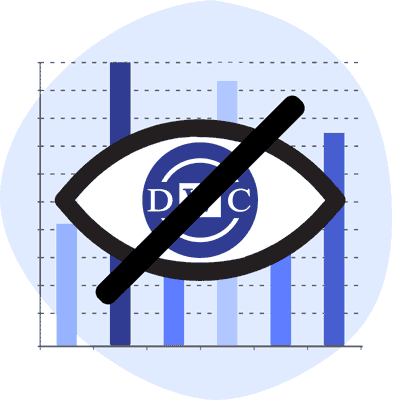daisyData: CA RFA & Utilization Review 2024 Data

In California, Utilization Review (UR) is the mandatory process by which claims administrators decide whether or not to approve treatment requests submitted by doctors treating injured workers.
To protect injured workers from UR abuses, in 2016 legislators passed Senate Bill 1160, which amended California’s UR law to require the Division of Workers’ Compensation (DWC) to “...develop a system for the mandatory electronic reporting of documents related to every utilization review…”
Eight years ago, California legislators could smell something rotten emanating from some claims administrators with regard to UR. As the legislators wrote, “While existing research does not support the argument of significant delays or denials due to UR, recent research suggests that, while such delays and denials may not be system-wide, they may be specific to certain employers or UR entities.”
Today, we publish verifiable UR decision data collected from 367 California treating physicians who used daisyAuth to submit over 135,300 Requests for Authorization (RFAs) for over 50,000 injured workers in 2024 through July. daisyAuth creates and submits RFAs, and documents the UR decisions claims administrators send in response.
These data expose that claims administrators' denial rates range from as low as 3% of requested treatments to as high as 46% of requested treatments—and confirms legislators’ prescient efforts to curb UR abuses through data collection.
Back in 2016, legislators hoped that the UR data collected by the DWC would “shine a bright light on how UR impacts claims, both system-wide and for specific employers and UR entities. These data will make possible targeted audits and legislative initiatives that address unnecessary medical disputes.”
Unfortunately for injured workers throughout California, the DWC ignored the UR stench that concerned these elected officials. The agency also ignored the directive to collect UR data from claims administrators and failed to establish an electronic system to capture every UR decision as mandated.
Rather than exposing predatory UR practices, the DWC chooses to keep legislators in the dark, effectively protecting the profits of claims administrators, their side-kick vendors, and their private equity owners.
Total daisyAuth RFAs January-July 2024
daisyAuth was developed to make it significantly easier for requesting physicians to create and fax compliant RFAs. For each RFA sent, daisyAuth retains the requested treatment data listed on the DWC Form RFA and retains the fax receipt verifying the date and time the claims administrator received the RFA.
Below is the RFA data collected from daisyAuth from 1/1/2024 through 7/31/2024.
RFAs Sent 1/1/2024 - 7/31/2024 |
daisyAuthData |
Requesting Provider Count |
367 |
Count of Injured Workers |
50,542 |
Count of DWC RFA Forms Sent |
135,308 |
Number of Treatments For Which Authorization Requested |
267,317 |
Average Number of Treatments Requested per RFA |
2 |
No Standardized UR Forms
Treating physicians in California are subject to strict standards in compliantly submitting RFAs using DWC Form RFA. But absurdly, there is no equivalent requirement for claims administrators. The DWC allows these entities to respond to RFAs with UR decisions in any format they choose.
As a result of this inexplicable double standard, claims administrators send providers bloated, convoluted, illegible or barely legible UR decisions that fail to address each of the specific treatments requested in the RFA. A UR decision can be 1 page or dozens of pages.
Further, even if the DWC were inclined to protect injured workers from UR abuses, without a standardized UR form it is impossible to collect data to “shine a bright light on how UR impacts claims, both system-wide and for specific employers and UR entities.”
By failing to mandate a standardized UR form, the DWC precluded any effort to systematically collect UR data or apply technology that would make UR data collection and analysis faster and more efficient. Instead, administrative staff must read and manually scribe (“post”) the details of these UR decisions.
CA UR Denial & Approval Rates January-July 2024
Below is the UR data collected from UR decisions claims administrators sent to daisyBill providers in response to the RFAs submitted between 1/1/2024 through 7/31/2024. (For a look at previous UR data gathered from daisyAuth, see our roundups of UR decisions in 2022 and 2023.)
The data below reflect UR decisions that were manually “posted” to the 267,317 treatments requested by physicians’ administrative staff.
Most notably, only 42% of requested treatments have a UR decision posted. That this statistic is not 100% reflects the DWC’s failure to implement regulations to track and enforce UR response compliance by claims administrators.
Utilization Review (UR) Decisions for RFAs Sent 1/1/2024-7/31/2024 |
daisyAuth Data |
Number of Treatments For Which Authorization Requested |
267,317 |
Total UR Treatment Decisions Posted |
112,495 |
UR Decisions Approving Requested Treatment |
79,342 |
% of UR Decisions Approving Requested Treatment |
71% |
UR Decisions Denying Requested Treatment |
24,530 |
% of UR Decisions Denying Requested Treatment |
22% |
Note: the total numbers of approval and denial decisions do not add up to the total number of posted UR decisions; the remaining UR decisions modified the requested treatment or deferred the UR decision.
The statistics above show that only 71% of treatment requests in the data set were approved, with 22% denied. It is at least questionable, if not implausible, that over a fifth of the treatments requested by physicians were medically unnecessary or inappropriate.
daisyAuth Verifies Legislators’ Concerns About UR ‘No Machines’
Crucially, disparities in approval rates between different claims administrators are impossible to ignore. daisyAuth data verify legislators’ 2016 fears that while “denials may not be system-wide, they may be specific to certain employers or UR entities.”
In other words, legislators were seemingly trying to address a suspicion that some Utilization Review Organizations (UROs) are nothing more than cost-cutting “No Machines.”
The numbers validate those suspicions. With the overall average denial rate at 22%, some claims administrators’ denial rates were in the single digits. Yet the largest claims administrator in our system by volume, Sedgwick, is reported as denying 26% of requested treatments.
Meanwhile, the table below displays the UR denial rates for 19 claims administrators that equaled or exceeded a UR denial rate of 30%.
Claims Administrator |
UR Decision Deny % |
Packard Claims Administration |
46% |
Guard Insurance Group |
44% |
Tokio Marine Management, Inc. |
43% |
Pacific Gas & Electric |
41% |
Nassco / General Dynamics |
37% |
Next Level Administrators |
37% |
Farmers Insurance |
36% |
Berkshire Hathaway Homestate Companies |
35% |
Athens Administrators |
34% |
National Interstate Insurance |
34% |
Beta Healthcare Group Risk Management Authority |
34% |
Berkley Net Underwriters, LLC |
34% |
AmTrust North America, Inc. |
32% |
Crum & Forster |
32% |
The Hartford |
31% |
Benchmark Administrators |
31% |
GuideOne Insurance |
31% |
Liberty Mutual Insurance |
30% |
AmeriTrust Group, Inc. |
30% |
We cannot say whether any claims administrator’s denial rates reflect a tendency to prioritize cost control over injured workers’ health. But if statistically, a worker is significantly more likely to be denied care by one claims administrator than another, is it plausible that medical necessity and appropriateness are the reasons?
As we have documented in this space, claims administrators and their UROs abuse the UR system as follows:
- Failing to respond to an RFA
- Sending partial UR decisions that do not address all of the treatments requested by the RFA
- Leaving providers vague voicemail or email messages requesting peer-to-peer conversations
- Sending lengthy UR decisions that can exceed 20 pages of microscopic print
- Applying non-MTUS treatment guidelines
- Failing to send provider RFA documentation to URO for review
As we have repeatedly pointed out, no one knows the full extent of UR abuse, because the DWC has failed to implement two state laws instructing the DWC to collect employer UR data and present it to legislators and the public.
83 Claims Administrators’ UR Data
Below, we list the 83 claims administrators from which daisyAuth providers received and posted 100 or more UR decisions, for RFAs sent between January 1, 2024, and July 31, 2024. The list is ordered according to the volume of UR decisions posted.
While we are happy to collect and publicize these data, it should not be the responsibility of a billing software company to keep track of UR denial and approval rates. That task is the legally mandated responsibility of the DWC, whose failure to follow the law and honor its regulatory obligations is an affront to injured workers and the physicians attempting to heal them.
Claims Administrator |
Total UR Decision Count |
‘Approve’ UR Decision Count |
‘Approve’ UR Decision % |
‘Deny’ UR Decision Count |
‘Deny’ UR Decision % |
Sedgwick Claims Management Services, Inc. |
29,520 |
19,296 |
65% |
7,662 |
26% |
State Compensation Insurance Fund (CA) |
9,043 |
7,259 |
80% |
1,382 |
15% |
Gallagher Bassett Services Inc. |
8,627 |
6,020 |
70% |
2,053 |
24% |
CorVel |
5,206 |
4,492 |
86% |
535 |
10% |
Intercare Holdings Insurance Services, Inc. |
3,907 |
3,280 |
84% |
404 |
10% |
Athens Administrators |
2,982 |
1,558 |
52% |
1,004 |
34% |
Tristar Risk Management |
2,806 |
2,338 |
83% |
374 |
13% |
Insurance Company of the West |
2,772 |
1,942 |
70% |
514 |
19% |
AmTrust North America, Inc. |
2,727 |
1,423 |
52% |
873 |
32% |
ESIS, Inc. |
2,621 |
1,804 |
69% |
634 |
24% |
Broadspire Services, Inc. |
2,490 |
1,676 |
67% |
650 |
26% |
Liberty Mutual Insurance |
2,420 |
1,515 |
63% |
738 |
30% |
Zurich Insurance North America |
2,222 |
1,430 |
64% |
585 |
26% |
Travelers |
2,008 |
1,443 |
72% |
395 |
20% |
Keenan & Associates |
1,953 |
1,500 |
77% |
333 |
17% |
The Hartford |
1,645 |
958 |
58% |
515 |
31% |
Berkshire Hathaway Homestate Companies |
1,225 |
650 |
53% |
430 |
35% |
Adminsure, Inc. |
1,196 |
1,056 |
88% |
94 |
8% |
Republic Indemnity |
1,173 |
986 |
84% |
95 |
8% |
Cannon Cochran Management Services, Inc. |
1,170 |
802 |
69% |
263 |
22% |
Acclamation Insurance Management Services |
970 |
728 |
75% |
196 |
20% |
Nassco / General Dynamics |
833 |
520 |
62% |
312 |
37% |
Helmsman Management Services LLC |
792 |
535 |
68% |
198 |
25% |
CompWest Insurance Company |
764 |
531 |
70% |
86 |
11% |
Los Angeles County Metropolitan Transit Authority (CA) |
722 |
630 |
87% |
83 |
11% |
LWP Claims Solutions, Inc. |
710 |
568 |
80% |
101 |
14% |
CopperPoint Mutual |
671 |
464 |
69% |
105 |
16% |
The Zenith |
663 |
452 |
68% |
172 |
26% |
Next Level Administrators |
636 |
300 |
47% |
236 |
37% |
Sentry Insurance |
620 |
517 |
83% |
64 |
10% |
City of Los Angeles (CA) |
607 |
514 |
85% |
58 |
10% |
Chubb Group of Insurance Companies |
602 |
520 |
86% |
42 |
7% |
Employers Compensation Insurance Company |
600 |
322 |
54% |
161 |
27% |
Farmers Insurance |
559 |
329 |
59% |
203 |
36% |
Cottingham & Butler Claims Services, Inc. |
521 |
371 |
71% |
103 |
20% |
Benchmark Administrators |
506 |
284 |
56% |
158 |
31% |
California Insurance Guarantee Association |
496 |
425 |
86% |
61 |
12% |
Guard Insurance Group |
445 |
183 |
41% |
198 |
44% |
Preferred Employers Insurance Company |
429 |
323 |
75% |
87 |
20% |
City of Los Angeles Department of Water and Power (CA) |
413 |
320 |
77% |
67 |
16% |
CNA Insurance |
401 |
255 |
64% |
114 |
28% |
Midwest Insurance |
399 |
257 |
64% |
111 |
28% |
Pacific Claims Management |
396 |
328 |
83% |
41 |
10% |
American Claims Management, Inc |
385 |
282 |
73% |
68 |
18% |
Fresno Unified School District (CA) |
375 |
353 |
94% |
19 |
5% |
Alaska National Insurance |
365 |
267 |
73% |
51 |
14% |
Pacific Gas & Electric |
364 |
199 |
55% |
151 |
41% |
City of Long Beach (CA) |
323 |
289 |
89% |
30 |
9% |
Santa Ana Unified School District (CA) |
297 |
266 |
90% |
25 |
8% |
Affirmative |
296 |
203 |
69% |
67 |
23% |
Marriott Claims Service Corp |
259 |
179 |
69% |
54 |
21% |
AmeriTrust Group, Inc. |
254 |
166 |
65% |
77 |
30% |
Strategic Comp |
244 |
182 |
75% |
40 |
16% |
County of Riverside (CA) |
232 |
195 |
84% |
14 |
6% |
Southern California Edison |
230 |
197 |
86% |
26 |
11% |
Pacific Compensation Insurance Company |
230 |
146 |
63% |
29 |
13% |
County of San Diego (CA) |
222 |
203 |
91% |
11 |
5% |
Crum & Forster |
210 |
118 |
56% |
67 |
32% |
WCF Insurance |
205 |
165 |
80% |
39 |
19% |
PMA Companies |
205 |
143 |
70% |
38 |
19% |
The Walt Disney Company |
196 |
167 |
85% |
13 |
7% |
Packard Claims Administration |
189 |
73 |
39% |
86 |
46% |
County of San Bernardino (CA) |
188 |
154 |
82% |
31 |
16% |
National Interstate Insurance |
180 |
102 |
57% |
62 |
34% |
Loma Linda University (CA) |
175 |
145 |
83% |
27 |
15% |
Tokio Marine Management, Inc. |
173 |
97 |
56% |
75 |
43% |
City and County of San Francisco (CA) |
172 |
154 |
90% |
12 |
7% |
Elite Claims Management, Inc. |
172 |
147 |
85% |
19 |
11% |
GuideOne Insurance |
172 |
114 |
66% |
54 |
31% |
City of San Diego (CA) |
165 |
162 |
98% |
||
Beta Healthcare Group Risk Management Authority |
161 |
89 |
55% |
54 |
34% |
Berkley Net Underwriters, LLC |
155 |
69 |
45% |
53 |
34% |
ClaimQuest, Inc. |
147 |
106 |
72% |
28 |
19% |
Protective Insurance |
142 |
105 |
74% |
18 |
13% |
Workers' Compensation Administrators, LLC |
139 |
129 |
93% |
7 |
5% |
Contra Costa County Risk Management (CA) |
123 |
113 |
92% |
8 |
7% |
Omaha National Group |
123 |
80 |
65% |
27 |
22% |
Pitman Farms |
120 |
116 |
97% |
4 |
3% |
Innovative Claim Solutions |
115 |
101 |
88% |
14 |
12% |
Nationwide Insurance Companies |
115 |
86 |
75% |
24 |
21% |
Church Mutual Insurance Company |
112 |
93 |
83% |
14 |
13% |
QBE North American |
108 |
62 |
57% |
30 |
28% |
National Casualty Company |
107 |
84 |
79% |
19 |
18% |
Submit RFAs in 30 seconds and automatically track UR decisions with daisyAuth. Request a demo below!
REQUEST DEMO
DaisyBill provides content as an insightful service to its readers and clients. It does not offer legal advice and cannot guarantee the accuracy or suitability of its content for a particular purpose.
%20(1).gif)



.gif)


Interesting article. However, for those of us who have been in the system long enough to remember the "wild west" of medical treatment where things such as home hot tubs, expensive beds, massages and even experimental treatments were routinely ordered by a Workers' Compensation Judge, the UR system, while certainly imperfect, is a far better system than the old one where what was reasonably required to "cure and relieve" was often not reasonable and did not "cure OR relieve". Injured workers do have remedies available to them if a UR decision is untimely (DOR to an expedited), if they dispute the decision itself (IMR appeal) or if the IMR decision is clearly erroneous and again, the subject of a DOR to let a Judge determine the issue. I review dozens of UR decisions weekly. The vast majority are approvals. A few are modifications or a deferral because the injury and/or body part are not admitted, and ocassionally I see a denial - usually for narcotic medication, very expensive DME or never ending PT or acupuncture when there's no showing of improvement or how an additional 12 sessions of PT will help the patient improve. I also see decisions that are reversed when the UR physician speaks to the treating physician in their "peer to peer". UR is really no different than a "pre-certification" for your personal insurance. Personal policies for a PPO insurance plan also dictate what they think is reasonable (translation: what they will pay for). I see far more approvals of treatment when a treating doctor actually explains why she/he is requesting the specific treatment they are requesting, instead of just boilerplate reports that say nothing. A couple of lines about how Ms. Jones has made tremendous improvement with six sessions of physical therapy so requesting an additional six sessions goes a long way towards a UR approval.